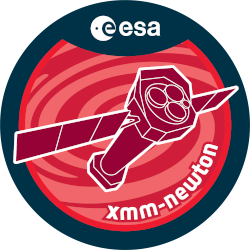

| Proposal ID | 014989 |
| Title | Observing the Highest Energy Emissions from Young Protostellar Jets |
| Download Data Associated to the proposal | https://nxsa.esac.esa.int/nxsa-sl/servlet/data-action-aio?obsno=0149890301 |
| DOI | https://doi.org/10.5270/esa-xjgl9mx |
| Principal Investigator, PI | Dr Eric Perlman |
| Abstract | A bipolar jet outflow, observed in optical/IR atomic and molecular emissionlines, is a hallmark of the formation of a new star. Recently, XMM-Newton andChandra have found X-ray emission from two protostellar jets, at least one ofwhich originates in a class 0/1 protostar. This emission is believed to beproduced within the leading edge of shocks, by interactions with the ambientmedium. The X-ray emission is believed to excite the UV/optical/IR lineemission. Our targets, HH211 and HH212, are class 0 systems. Class 0protostars are believed to be at their most powerful stage, and are thereforealso expected to have the most powerful X-ray emission. These observations arecritical to understanding the evolution and physics of protostellar jets. |
| Publications |
|
| Instrument | EMOS1, EMOS2, EPN, OM, RGS1, RGS2 |
| Temporal Coverage | 2003-09-17T23:01:52Z/2003-09-18T12:40:24Z |
| Version | 17.56_20190403_1200 |
| Mission Description | The European Space Agencys (ESA) X-ray Multi-Mirror Mission (XMM-Newton) was launched by an Ariane 504 on December 10th 1999. XMM-Newton is ESAs second cornerstone of the Horizon 2000 Science Programme. It carries 3 high throughput X-ray telescopes with an unprecedented effective area, and an optical monitor, the first flown on a X-ray observatory. The large collecting area and ability to make long uninterrupted exposures provide highly sensitive observations. Since Earths atmosphere blocks out all X-rays, only a telescope in space can detect and study celestial X-ray sources. The XMM-Newton mission is helping scientists to solve a number of cosmic mysteries, ranging from the enigmatic black holes to the origins of the Universe itself. Observing time on XMM-Newton is being made available to the scientific community, applying for observational periods on a competitive basis. |
| Creator Contact | https://www.cosmos.esa.int/web/xmm-newton/xmm-newton-helpdesk |
| Date Published | 2004-10-14T00:00:00Z |
| Last Update | 2025-08-04 |
| Keywords | "XMM", "ir line emission", "XMM-Newton", "leading edge", "powerful stage", "ir atomic", "protostellar jets", "bipolar jet outflow", "molecular emission lines", "energy emissions", "powerful xray emission", "xmm newton", "ambient medium", "xray emission" |
| Publisher And Registrant | European Space Agency |
| Credit Guidelines | European Space Agency, Dr Eric Perlman, 2004, 'Observing the Highest Energy Emissions from Young Protostellar Jets', 17.56_20190403_1200, European Space Agency, https://doi.org/10.5270/esa-xjgl9mx |